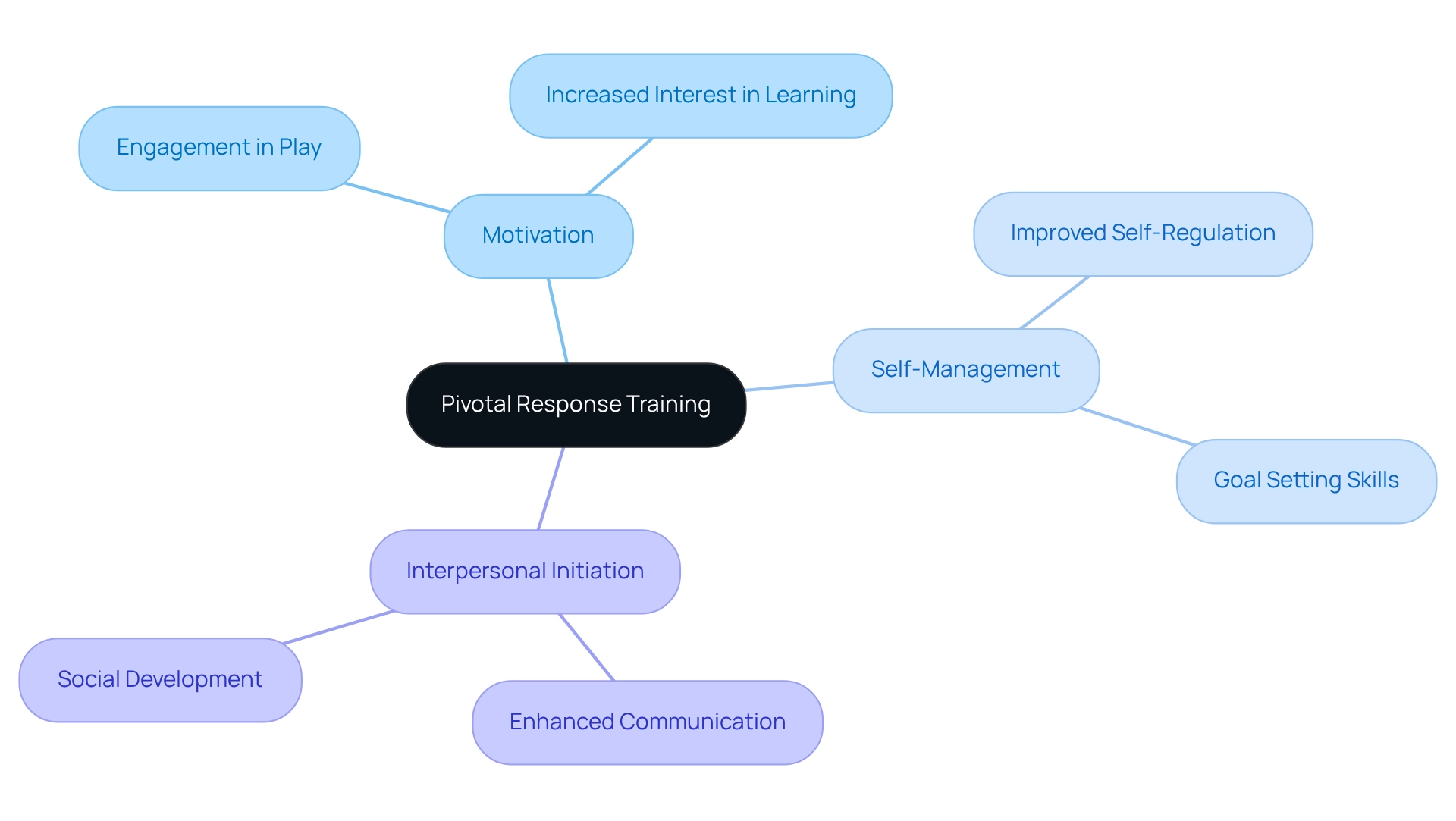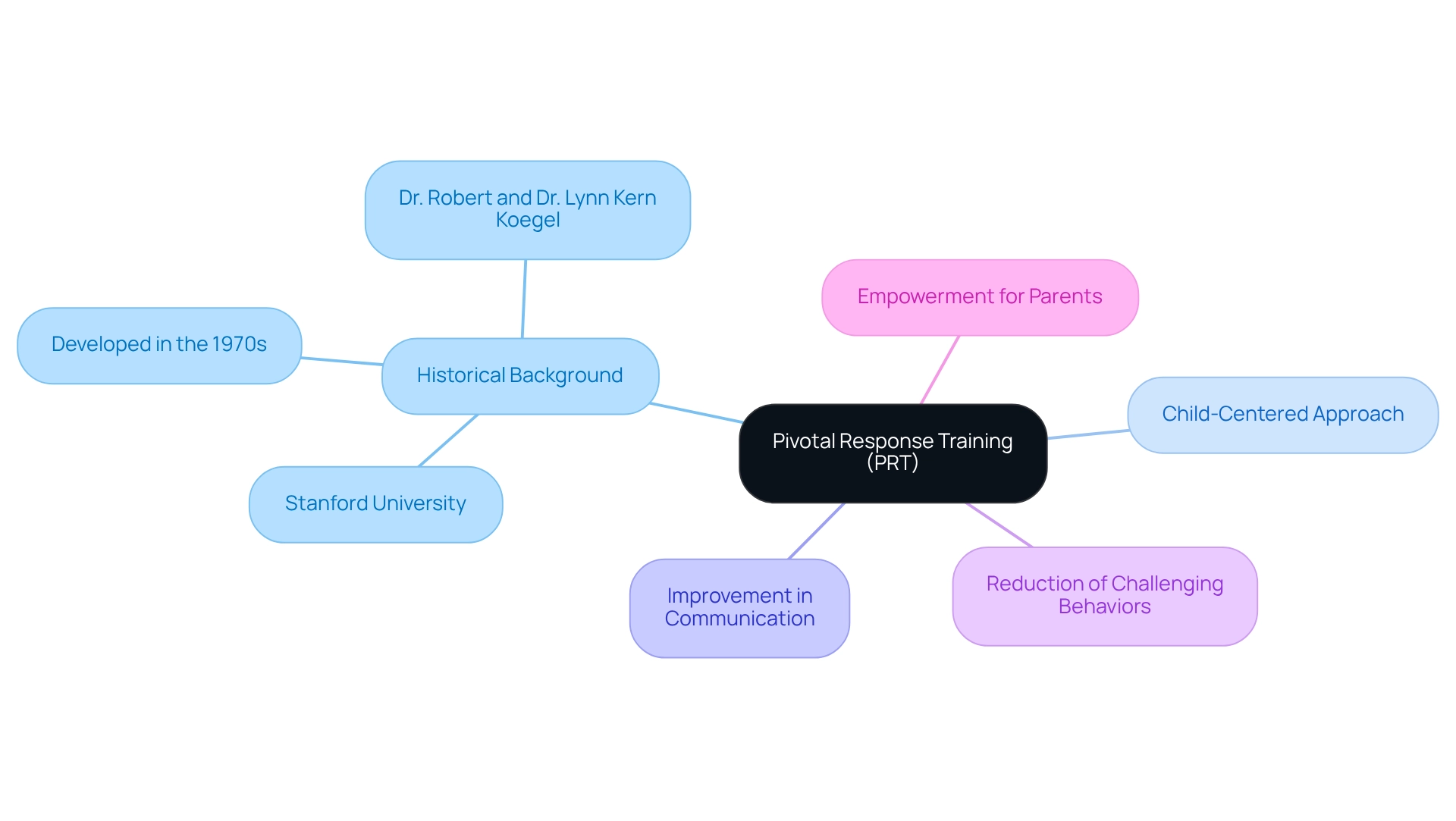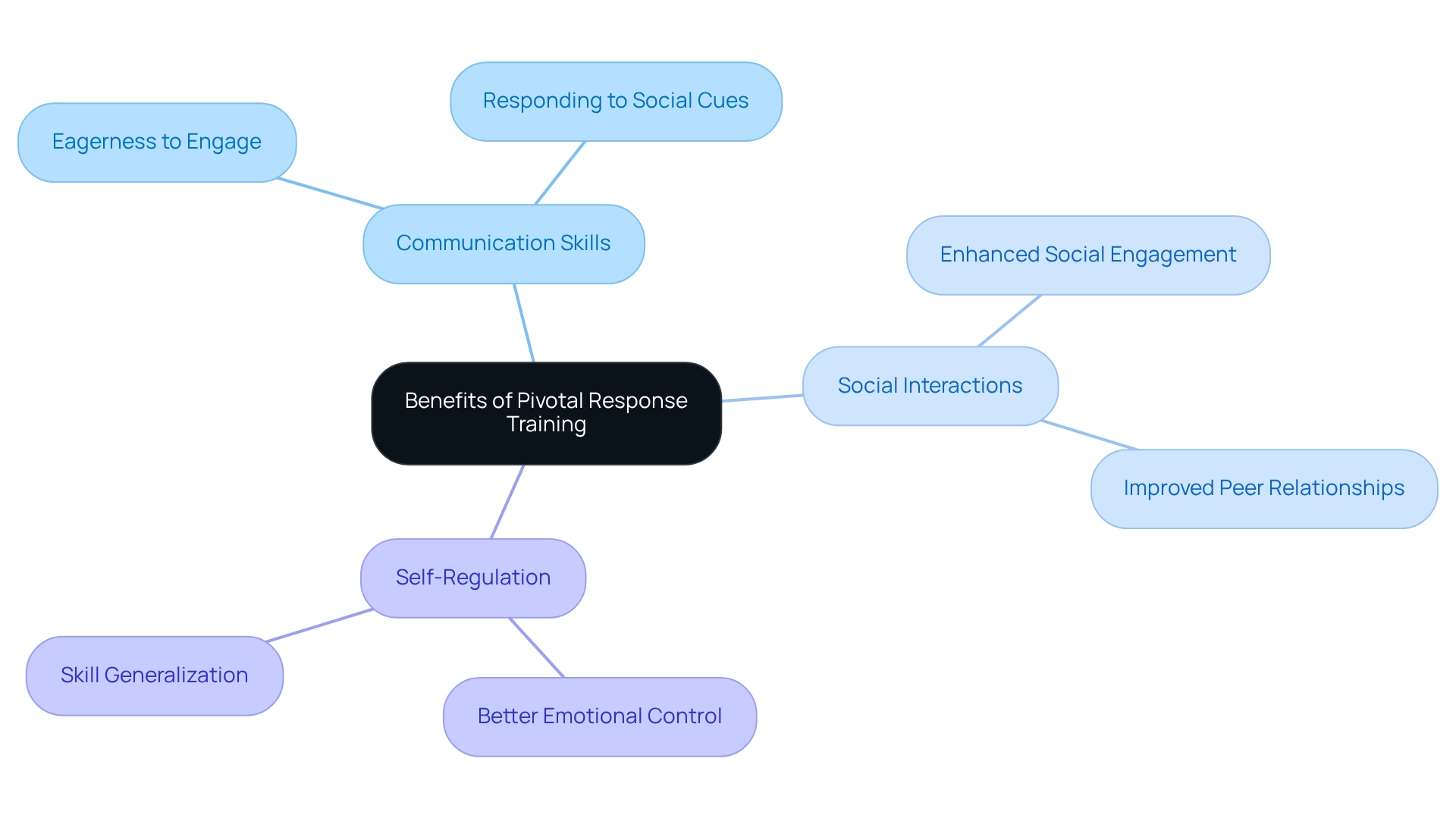Overview
Pivotal Response Training (PRT) is a compassionate and naturalistic behavioral intervention tailored for individuals with Autism Spectrum Disorder (ASD). It focuses on enhancing motivation and promoting learner-initiated education through engaging play-based activities. This approach is not just about teaching; it’s about understanding the unique needs of each child.
At the heart of PRT are its core principles, such as child choice and natural reinforcement. These principles foster essential skills like communication and social interaction, paving the way for significant developmental benefits for children with autism. Imagine your child thriving in an environment where they feel empowered to learn and connect with others—this is the promise of PRT.
As parents, it’s natural to seek effective strategies that resonate with your child's learning style. PRT offers a nurturing framework that not only addresses educational goals but also supports emotional growth. By embracing this approach, you can create a more enriching experience for your child, filled with joy and discovery.
If you’re interested in exploring PRT further, consider reaching out to professionals who specialize in this area. They can provide guidance tailored to your child's needs, helping you embark on this rewarding journey together.
Introduction
In the realm of autism interventions, Pivotal Response Training (PRT) shines as a dynamic, child-centered approach that truly prioritizes motivation and natural learning. Specifically designed for children with Autism Spectrum Disorder, PRT encourages engagement through play-based activities that resonate deeply with the child's interests.
By focusing on pivotal areas such as:
- Self-management
- Social initiation
This method not only enhances communication skills but also fosters a more enjoyable and effective learning experience. As research continues to validate its efficacy, understanding the evolution and core principles of PRT reveals its significant impact on the developmental journey of children with autism.
For parents seeking effective support, exploring PRT can be a meaningful step in nurturing their child's growth.
Defining Pivotal Response Training: An Overview
What is pivotal response training? It is a compassionate, naturalistic behavioral intervention specifically designed for individuals with Autism Spectrum Disorder (ASD). It emphasizes the importance of motivation and learner-initiated education, allowing children to engage in play-based activities that resonate with them. By focusing on key areas of development—such as motivation, self-management, and interpersonal initiation—PRT aims to foster growth that positively influences other abilities.
Imagine the joy of seeing your child thrive in an environment that nurtures their natural interests. PRT not only supports essential skills but also enhances overall communication and interaction capabilities in children with autism. By nurturing these vital abilities, PRT hopes to create a brighter path for your child's social and emotional development.
As you explore the possibilities of what is pivotal response training, consider how this method can make a difference in your child's life. Your journey as a parent is filled with challenges, but knowing that there are effective strategies available can inspire hope and action. Let's work together to provide our children with the support they need to flourish.

The Evolution of Pivotal Response Training: Historical Context
Pivotal Response Training (PRT), developed in the 1970s by Dr. Robert Koegel and Dr. Lynn Kern Koegel at Stanford University, represents a significant shift in how we approach learning for children with Autism Spectrum Disorder (ASD). Unlike traditional Applied Behavior Analysis (ABA) techniques, which often feel rigid and repetitive, PRT is designed to be more flexible and child-centered. This nurturing approach not only aims to enhance communication abilities but also seeks to boost a young person's motivation to learn.
Over the years, numerous studies have shown that PRT is effective in improving interpersonal communication skills and reducing challenging behaviors in children with ASD. This evidence highlights the importance of using methods that resonate with the child's experiences and emotions. As parents, understanding these advancements can be incredibly empowering.
If you’re looking for ways to support your child’s development, consider exploring PRT further. It’s a compassionate approach that fosters growth and connection, making learning a more enjoyable journey for both you and your child.

Core Principles and Pivotal Areas of Focus in PRT
What is pivotal response training involves several core principles that guide its implementation, each designed to support and empower our children. First, consider Child Choice: this principle emphasizes the importance of allowing children to select activities that spark their interest. By doing so, we help them feel more engaged and invested in their learning journey.
Next, we have Natural Reinforcement. This approach uses the natural consequences of actions to encourage desired behaviors, making learning not only relevant but also effective. Imagine a child learning to share through the joy of playing with friends—this connection makes the lesson stick.
Finally, what is pivotal response training emphasizes four Pivotal Areas: motivation, self-management, responding to multiple cues, and interpersonal initiation. By honing in on these crucial skills, we aim to foster broader developmental benefits in communication and social interactions. Together, these principles create a nurturing environment where children can thrive and grow.

Benefits of Pivotal Response Training: Enhancing Development and Communication
The benefits of what is pivotal response training (PRT) are truly remarkable and well-documented. Many studies suggest that PRT can lead to significant improvements in communication skills, social interactions, and overall behavior in children with autism. For instance, children who participate in PRT often show:
- A greater eagerness to engage in social activities
- An enhanced ability to respond to social cues
- Improved self-regulation
Moreover, PRT emphasizes naturalistic learning environments, which allows for broader skill generalization. This means that children can apply what they learn in therapy to everyday situations. Such a holistic approach not only nurtures the child's development but also creates a more positive and engaging learning experience. If you're a parent looking for effective ways to support your child's growth, consider exploring what is pivotal response training as a valuable resource.

Conclusion
Pivotal Response Training (PRT) is a transformative intervention for children with Autism Spectrum Disorder, blending motivation with naturalistic learning. By focusing on pivotal areas like self-management and social initiation, PRT enhances communication skills and fosters genuine engagement in play-based activities. Prioritizing child choice and utilizing natural reinforcement empowers children to take charge of their learning journey, leading to significant developmental gains.
The historical evolution of PRT showcases its departure from traditional, rigid behavioral approaches, highlighting its adaptability and effectiveness. Research supports PRT's ability to improve not only communication and social skills but also overall behavioral functioning. Children who participate in PRT often show increased motivation and improved responses to social cues, which are essential for navigating daily interactions.
Ultimately, PRT offers a holistic approach that supports the developmental needs of children with autism while creating a more enjoyable and meaningful learning experience. For parents seeking effective interventions, embracing PRT can be a pivotal step toward nurturing their child's growth and fostering a brighter future. Consider exploring PRT further, as it may provide the support and guidance your child needs to thrive.
Frequently Asked Questions
What is pivotal response training (PRT)?
Pivotal response training (PRT) is a compassionate, naturalistic behavioral intervention specifically designed for individuals with Autism Spectrum Disorder (ASD). It focuses on enhancing motivation and learner-initiated education through play-based activities.
What are the key areas of development that PRT focuses on?
PRT emphasizes key areas of development such as motivation, self-management, and interpersonal initiation, aiming to foster growth that positively influences other abilities.
How does PRT benefit children with autism?
PRT supports essential skills and enhances overall communication and interaction capabilities in children with autism, contributing to their social and emotional development.
What is the goal of PRT in relation to children's interests?
The goal of PRT is to create an environment that nurtures children's natural interests, allowing them to thrive and engage meaningfully in their learning experiences.
How can PRT inspire hope for parents of children with ASD?
PRT provides effective strategies that can help children flourish, offering parents hope and a sense of action in addressing the challenges they face in their journey.




